There’s pause…followed by deep thought that is applied with precise technique in the aesthetic practice of painter Dan Gamble. For more than two decades Gamble has produced drawings and paintings that are multifaceted in terms of formal and spiritual investigation. This week the COMP Magazine jogged on down to Hyde Park to visit Gamble to discuss his perpetual journey, the experiences that have influenced his practice, his time in meditation in studio, and what’s the plan for the remainder of 2018.
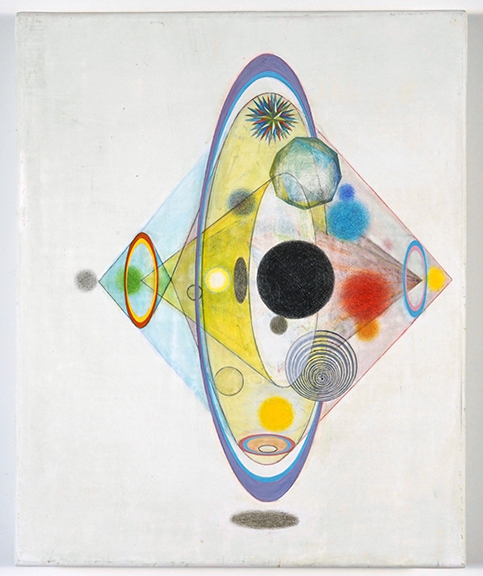
Dan Gamble, Untitled, 2017, Egg tempera, graphite, silverpoint, on panel. 10″ x 8″
You grew up in Wisconsin. Studied in Milwaukee at the University of Wisconsin, then in Albuquerque at the University of New Mexico, and eventually landed in Chicago. These are vastly different locales. How do you think place impacts your artistic investigations?
After high school, before college, I lived in Pocatello, Idaho, Milwaukee, Wisconsin, Janesville, Wisconsin, Novato, California. I began my college studies at the University of Wisconsin, Rock County (a Junior College) then transferred to UW-Milwaukee for my BFA. After I finished my grad studies in 1986 at the University of New Mexico, and before I came to Chicago in 1991, I lived in Brooklyn (Bedford-Stuyvesant), Sedona, Arizona, Dubuque, Iowa, and Galena, Illinois.
My work has always been – at least in part – responsive to place, to local conditions both physical and social, though the influence is rarely immediate. Sometimes years pass before it becomes apparent.
Places that have had the most tangible impact:
New Mexico and Arizona. Surreal, otherworldly terrain, to my midwestern eyes. Malpais [badlands], mesas and buttes, striated, attenuated forms rising up from vast plateaus.
But it wasn’t just the alien landscape that left an imprint. It was in the Southwest – Sedona, Arizona in particular – that I was exposed (via a romantic entanglement) to New Age spiritualism and its many paths and facets. Some embraced ancient, traditional beliefs, Native American, eastern religions; others – the ones I found fascinating – sought to fuse scientific empiricism and arcane metaphysical mythologies. Pseudo-Science. While I saw beauty in the mandalas, the crystals and polished orbs, the pendulums and diving rods, I remained a skeptic. Still, I left the Southwest with a fascination for the esoteric inventions, the tools, objects – hand-carved wands, jeweled amulets, all sorts of paraphernalia designed to bridge the material and the incorporeal.
New York, Bedford-Stuyvesant, 1986. A construction job in Manhattan. The work – remodeling restaurants – was equally divided between demolition and construction. A continuous cycle of destruction and rebuilding. Construction based on simple geometry: grids, wood or steel armatures; pounding nails into 2”x 4” pine and 4’ x 8’ sheetrock. Traveling to work through a bleak landscape, past abandoned lots – illegal dumps filled with mounds of trash and construction debris, past windowless ruins of long dead redbrick factories and warehouses. Going home at night on the train, covered with soot, inadvertently rubbing against, leaving black smears on the white dress shirts of traders and insurance salesmen. Days off I’d go to museums and galleries. As much as I treasured those visits, it was life that exerted the greater influence. The art world seemed so rarified I never felt part of it.
Eventually I made my way to Chicago. Though no longer working construction, I witnessed the building boom of the 90’s. More armatures. Cranes and rising, raw concrete towers shrouded by low clouds. New forms but I could imagine them abandoned, bleached, skeletal. And I became enchanted by the city sky at night, the shifting color, street light trapped by cloud cover, strange colors, pink and orange sometimes almost fleshy, other times sallow, greenish.
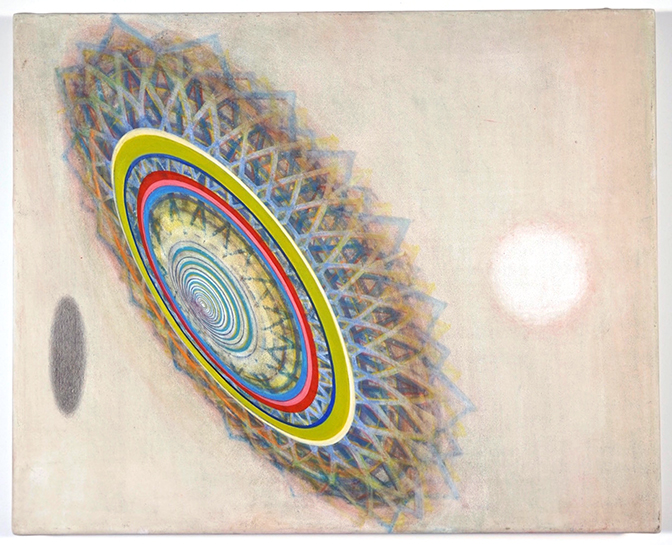
Dan Gamble, Untitled, 2016, Egg tempera, silverpoint, on panel. 10″ x 12″
Also, expanding on influences, are there any early experiences or ideas or people that you still see as holding importance to your present day inquiry?
Before I decided to go to college, I lived in a small town north of San Francisco. I worked as a janitor and housecleaner. One day a co-worker mentioned that she’d been studying palm reading and offered to read mine. She looked it over, pointed to an area along the meat of my thumb and said “See those lines? You have what is called ‘The Grid of Insanity’. She was referring to a series of creases that met at right angles. It wasn’t the prediction – I won’t go into what meaning she attached to this observation – it was the phrase “Grid of Insanity” that stuck. The idea of fusing two disparate, opposing conditions: grid (rational, ordered) and insanity (irrational, chaotic) is something I’ve been intrigued with for thirty years. The discipline, the act of painting, for me at least, is an attempt to balance antagonistic objectives.
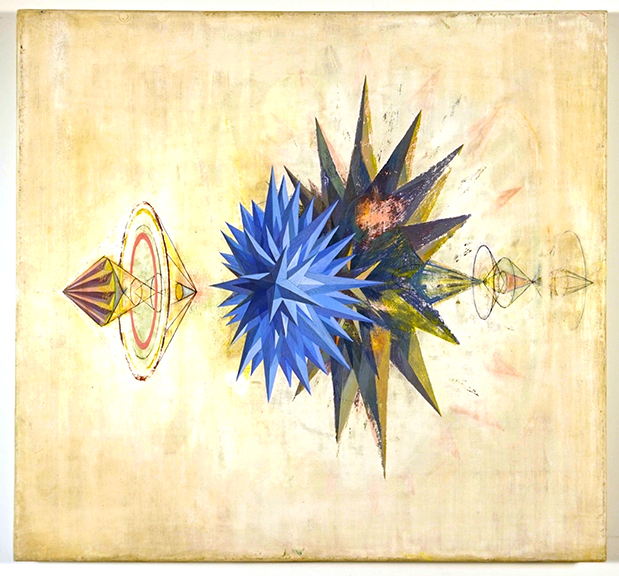
Dan Gamble, Untitled, 2018, Egg tempera, silverpoint, on panel. 13″ x 14″
Can we discuss your interest in the technical aspects of drawing and painting? Technically, your works are succinct while investigating fairly complex topics. Specifically, I am thinking about the small series of drawings where you use some colored pencil, then apply a technique using sand paper. Can you walk us through your process?
I love simple, uncomplicated materials. Like food, I like to know what’s in it. I look for materials that have the least amount of fillers, processing and packaging.
The drawings are mostly pencil, hardness varying from 8H to 8B. Occasionally I use color pencils, primary colors. Sometimes I thin the paper with fine sandpaper; when the drawing is held to light, circles and ellipses appear.
Small paintings on panels – I cut my own, mitre and join the supports, prime with chalk and rabbitskin glue gesso – are made with egg tempera: dry pigments mixed with water to form a paste, the paste is then mixed with dilute egg yolk. I work with a minimal palette, five or six colors and white. Because egg tempera requires layering, a few colors can be stretched to infinite variations.
When I paint with oils I use a simple medium of dammar varnish, stand or linseed oil, and turpentine. A few colors I grind by hand in order to achieve a level of pigment saturation not available in store-bought paint.
Drawing, for me, is a casual, exploratory activity, a way to push into new territories without being overly concerned with content, success or failure. I start with one objective: find a mark, shape, or composition that I’ve yet to use in previous work. Usually I give myself a day or so to finish and resolve or tear them up.
Paintings begin with a rudimentary composition. A single form, then another and so on. No preliminary drawing, no rough sketching on the painting. In contrast to the drawings, with paintings I’m stubborn; I’ll work on them for years if necessary. Long ago I discovered that I could work back into the image, aggressively alter or eradicate it, then re-build. The process, much to my satisfaction, leaves a subtle record – pentimenti – a history of prior stages.
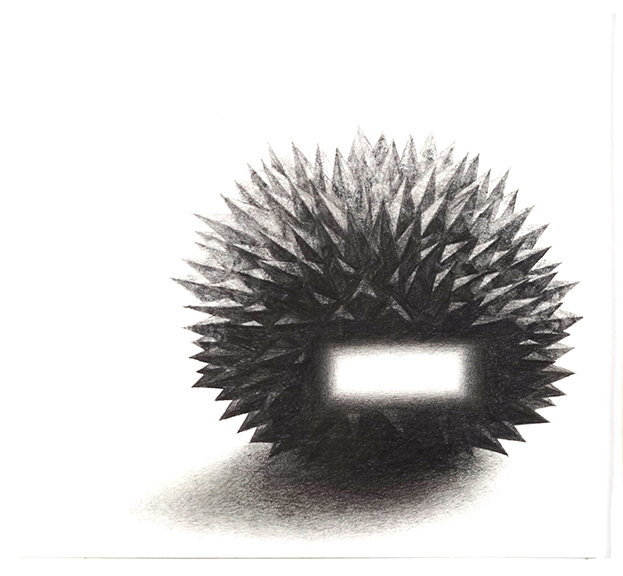
Dan Gamble, Untitled, 2018, pencil. 8” x 7 1/2”
While in the studio, you noted that some of the paintings can be paired in various arrangements. This makes me consider your work in a non-linear manner. I see this interchangeability to relate to formal ideas, like light, time and a number of other items that can intersect. What prompted this decision? How do you see this method transforming the reading of your work?
I like to think of the work, especially the small panels, as all one thing.
A dozen years ago I began to study Buddhism and practice sitting meditation (as a way to cope with chronic depression). I was drawn to Buddhist notions concerning the nature of matter and time. To me the most compelling element of these tenets is that of non-duality. All is considered to be one thing: separation is a delusion. Theoretical quantum physics points to a similar conclusion: matter is energy, fuzzy and uncertain, immeasurable. And the interstices of space are not empty.
The smaller paintings on panel make no reference to up or down – objects float or rest on multiple planes. The gesso surface that surrounds the objects is subtly translucent and suggests a radiant field. Each object has it own source of (implied) illumination. This lack of consistent light and orientation creates uncertainty and with that, potential. And so the paintings can be arranged in many different configurations. By offering this potential I hope to lessen the division between one piece and another.
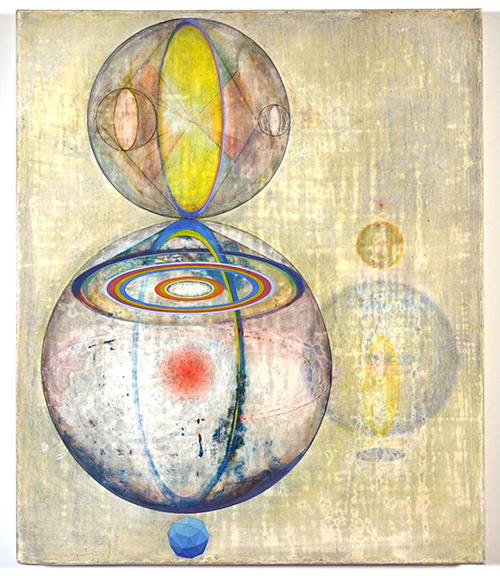
Dan Gamble, Untitled, 2018, Egg tempera, silverpoint, on panel. 14″ x 12″
In paintings like “Monitor” (2006) and “Cascade” (2011-2016) I see landscapes void of sentient forms that appear from some other dimension. On one level, there’s an illusory sci-fi quality and sense. It’s curious when I consider these works in contrast to your more realistic studies. I want to know how your approach differs in your various bodies of work?
The paintings, the ones I consider “inventions”, depict a scale or dimension other than human, that somehow we (the viewers) have been reduced or expanded to the size of the forms and objects within the paintings. Even though the inspiration for these inventions comes from realms we cannot see with our biological eyes – the infinitely small quantum world or the expanse of the cosmos – I paint them as though I could travel there and witness that which can only be proposed mathematically or viewed in digital approximation.
The still-life objects are, for me, a reminder, an aspect of quotidian life. Humble objects, mediations on looking and seeing. In contrast to the inventions, the objects are rendered near actual size, relative to human scale. Though I have specific conceptual considerations – one series is based on primary colors as they appear in liquids, such as blood, egg yolk, cobalt glass (actually an amorphous solid) – the compositions are uncomplicated. The focus is on observation.
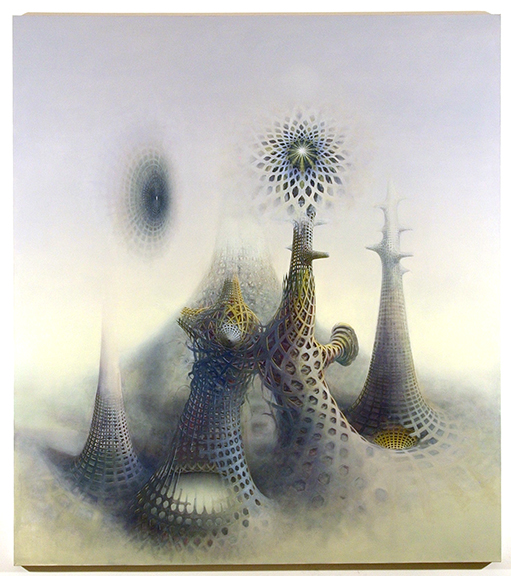
Dan Gamble, Cascade, 2016, Oil on canvas. 72″ x 64″
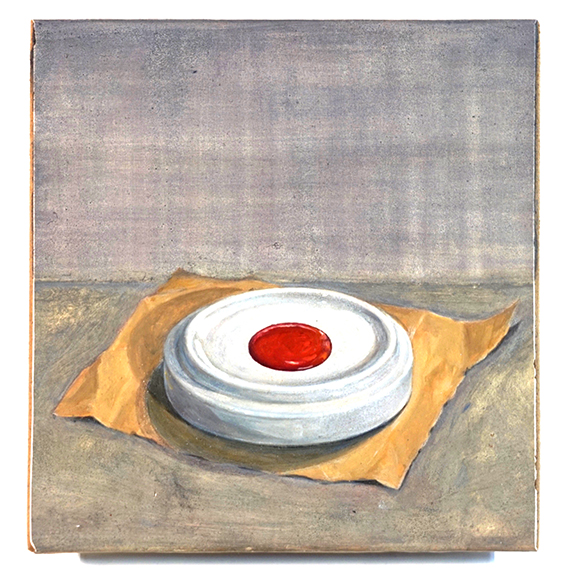
Dan Gamble, Untitled, 2016, Oil on panel. 8” x 7 1/2”
What do you value most in your aesthetic practice?
Mindfulness – each session requires patience and humility. My studio practice is daily, and so daily I am re-acquainted with patience and humility.
Learning. Gathering experience, honing skill.
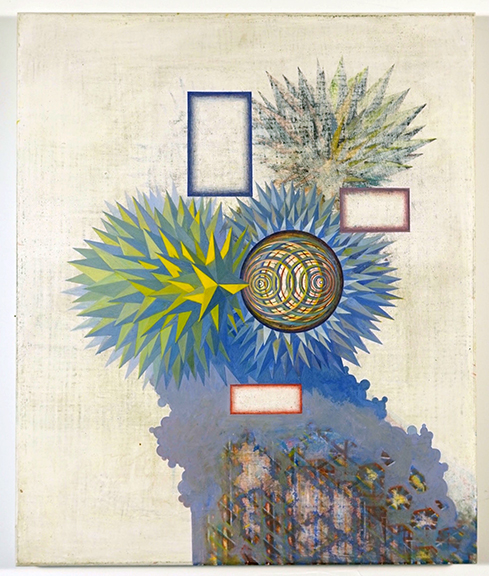
Dan Gamble, Untitled, 2018, Egg tempera on panel. 14 1/2″ x 12″
We’re now roughly half way through 2018. What are you currently working upon? Do you have any upcoming exhibitions? What’s next?
Currently I’m reevaluating work accumulated over the past two or three years. Some pieces need to be better resolved – time has revealed flaws. Some are in need of subtle changes, some are no longer of interest (obsolete) and can be re-engaged, re-mined (no pun intended) though I rarely eradicate the image completely. I’d rather first salvage old work than create more new. Once I’ve exhausted this process I’ll begin again.
I’m also finishing a collection of stories, non-fiction, biographical. I hope to eventually make/publish a book, stories with images culled from my body of work, 30 years of paintings, prints, drawings, and photographs.
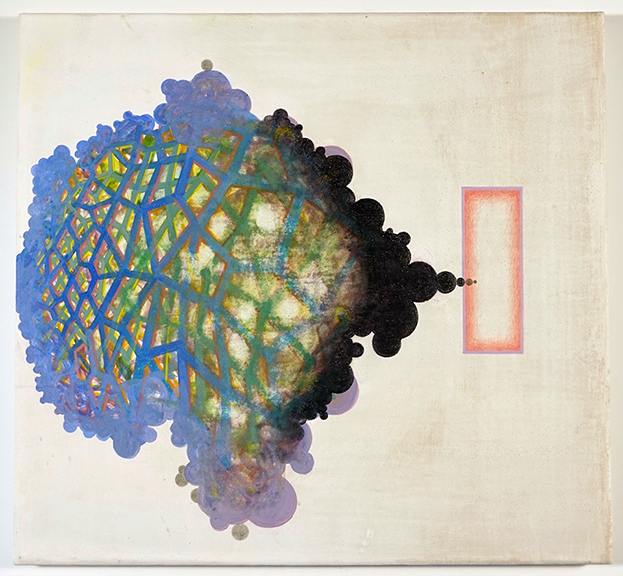
Dan Gamble, Untitled, 2017, Egg tempera, graphite, on panel. 12″ x 13″
For additional information on the aesthetic practice of Dan Gamble, please visit:
Dan Gamble – http://gambledan.com/
Chicago Cultural Center – https://www.cityofchicago.org/city/en/depts/dca/supp_info/gamble.html
Chicago Reader – https://www.chicagoreader.com/Bleader/archives/2010/07/26/morning-art-dan-gamble
Riverside Art Center – http://www.riversideartscenter.com/portage-dan-gamble-george-blaha-and-duncan-anderson/
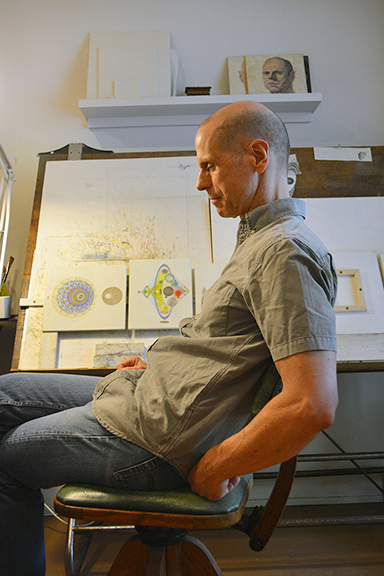
Dan Gamble, painter, Chicago, IL, 2018
Additional artworks by Dan Gamble:
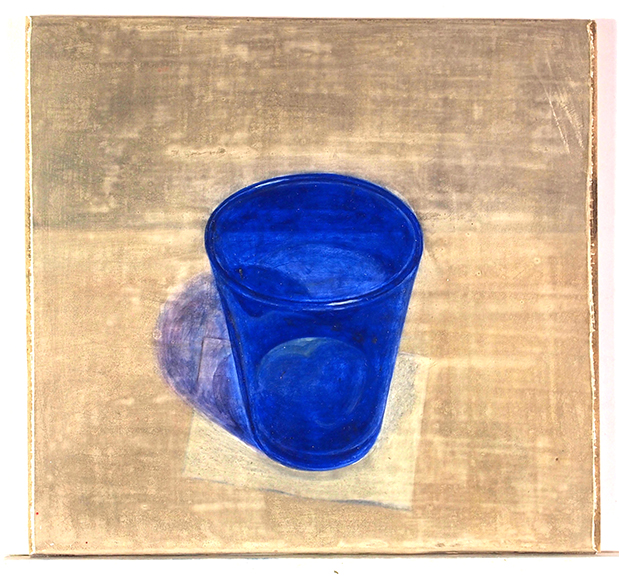
Dan Gamble, Untitled, 2017, Oil on panel. 8” x 7 1/2”
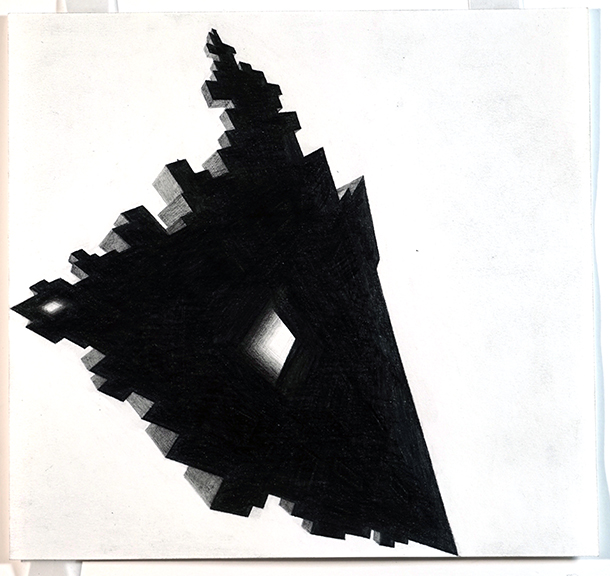
Dan Gamble, Untitled, 2018, pencil. 8” x 7 1/2”
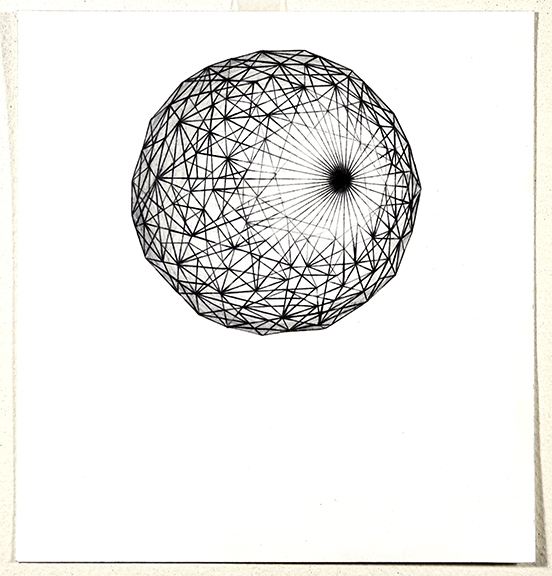
Dan Gamble, Untitled, 2018, pencil. 8” x 7 1/2”
Artist interview and portrait by Chester Alamo-Costello


